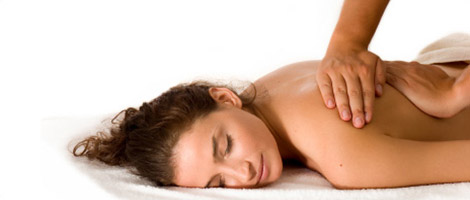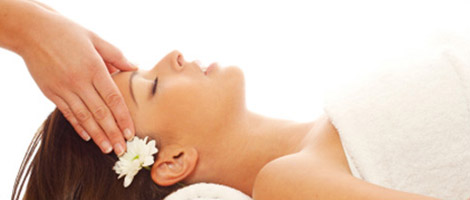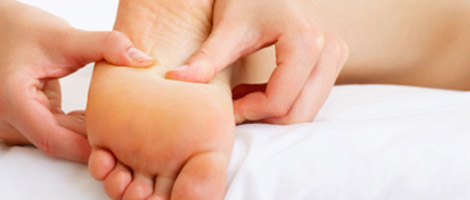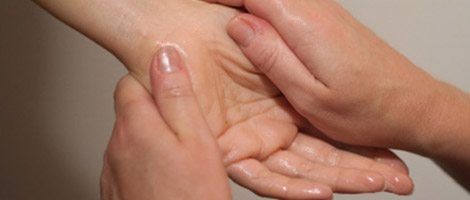
Massage - Back
Back massages have been bringing lovers together for centuries. From India to Japan, to brothels in the Wild West, relieving the tension that inevitably builds up in our back muscles can be both soothing and arousing. There are a lot of different types of manipulations that can be used to work out knots, promote health and increase general levels of wellbeing. It is also a great way to connect with a partner and gain a serious upper hand in any tally of good deeds with your lover.
Like a bull in a china shop, most of us wade into back massages without any idea of what is at stake. A good massage, as opposed to some pinching, prodding or poking rendition, can make that special someone turn to mush. Here at sexinfo101 we are going to give you the tips that are going make you look and feel like an expert with a PhD in pleasure. So take out your notebook, your red pencil and prepare to get the goods.
Effects
If you need some encouragement to either give or ask for a massage, then look no further. Although offering a single massage is a good pick-up technique, the effects of regular massages are cumulative, and incorporating massage into your monthly patterns (be it professional or relational) will give the greatest benefit. Regular massage can have the effect of strengthening and toning the entire body mechanism, and so help to prevent unnecessary strains and injuries that might otherwise occur due to excess tension and any resulting structural weaknesses. Massage can stimulate or calm the nervous system and thus help reduce fatigue, leaving the receiver with a feeling of replenished energy. At its best, massage has the potential to restore the individual - physically and mentally.
Common Types
Since we are trying to prepare you to deliver Navy-Seals-type massages, the best place to start is by figuring out what kind of massage to give. The following are descriptions of four common styles of massages with four specific expected outcomes. Once you figure out which style fits the profile, then you can decide which of our suggested techniques to apply.
Swedish Massage
Swedish massage therapists use five basic strokes, which anyone can learn and use on themselves and others. They are effleurage (stroking); petrissage (muscles are lightly grabbed and lifted); friction (thumbs and fingertips work in deep circles into the thickest part of muscles); tapotement (chopping, beating, and tapping strokes); and vibration (fingers are pressed or flattened firmly on a muscle, then the area is shaken rapidly for a few seconds).
Deep Tissue Massage
Deep tissue massage targets chronic tension in muscles that lie far below the surface of your body. You have five layers of muscle in your back (for instance), and while Swedish massage may help the first couple of layers, it won't do much directly for the muscle underneath. Deep muscle techniques usually involve slow strokes, direct pressure or friction movements that go across the grain of the muscles. Massage therapists will use their fingers, thumbs or occasionally even elbows to apply the needed pressure.
Sports Massage
Sports massage is designed to help you train better, whether you're a world champion or a weekend warrior. The techniques are similar to those in Swedish and deep tissue massage, but has been adapted to meet the athlete's special needs. Focus on the lower back and shoulders. Using heat and petrissage can promote injury reduction and prevention.
Neuromuscular Massage
Neuromuscular Massage is a form of deep tissue massage that is applied to individual muscles. It is used to increase blood flow, reduce pain and release pressure on nerves caused by injuries to muscles and other soft tissue. Neuromuscular massage helps release trigger points; intense knots of stressed muscle can also "refer" pain to other parts of the body. Relieving a tense trigger point in your back, for example, could help ease pain in your shoulder or reduce headaches.
Now the Secrets!
When you are starting your massage, remember that the back muscles are usually massaged in three groups. A successful back rub will cover all three groups.
- The long muscles that run parallel to the spine.
- The flat muscle groups that cover the top of the back and lower neck.
- The wide band of muscles that stretches from the spine to the side of the back.
- Begin the back rub with a simple circulation (sweeping motion) that touches all three areas in a simple, continuous stroke. You needn't press hard during this stroke.
Circulation stroke – Clocking in…
Begin with your hands flat and your fingers facing up from the base of the spine. Slide your hands along the spine, up towards the head. When you reach the neck, turn your hands so that your fingers massage along the top of the shoulders and then down the outer sides of the back. When you come back down the outer sides of the back, turn your hands back to the original position. If this confusing, think of it this way: if your back is a butterfly and your spine is the body, trace the spine with both hands. At the base of the neck, separate your hands and trace the wings, bringing you back to the base of the body. Repeat this circulation movement about ten times.
Pressing the Back
Pressing the back is the most dramatic massage stroke available. Since massage is about muscle tissue, and not back-cracking or other chiropractic issues, make sure that you keep that in mind during the back press. Keeping this in mind, the first step to this stroke is finding the mounds of muscle that run along side the spinal column. Massage is the manipulation of muscle tissue. These ridges are where you should concentrate your attention.
When pressing up the back, start at the base of the spine (even as low as the upper buttock). Apply pressure with the heel of each hand. Slide your hands along the ridges of muscle from the very base of the spine until you reach the shoulder blades.
In contrast to the circulation stroke, don't bring your hands back along the far outside of the back. In this stroke bring your hands back just off the original line, like mowing your lawn. You will know when you are doing this stroke properly. Your partner will moan with delight. At least ten strokes are appropriate here.
Variations: Small circles as you glide up the spine, use your thumbs in place of the heel of your hand; scratch their back as you return to the base of the spine. Use your own imagination.
Finger Kneading Along the Spine
Use your fingertips to knead the two strands of long muscles that run just outboard of the spine. The muscles work very hard keeping you upright, and are sometimes the only support our (increasingly) soft middles have. Envision yourself kneading at every vertebra. Two or more trips up and down the spine are great.
Back Compression
This stroke is another one that attacks the muscles beside the spine. Put the heel of your hand on those same long muscles that run down your back. Push downward. Release the pressure and then move slightly up the spine. Make three or so passes up the spine. This stroke can also be done hands together, first on the right side, then both hands together on the left side of the spine.
Kneading the Bread
Knead the muscle of the upper and lower back. Pressing on bone won't have any effect on your partner. Try to find the tissue of the muscles and work that area. The effect is worth the effort.
The Pinch
Use the thumbs of each hand to press folds of flesh and muscle together. The hands move slightly in opposite directions to scissor the flesh between the two thumbs. Moving your thumbs in small circles during this stroke is a nice addition.
Shoulder Massaging
With one hand, lift up on your partners shoulder. You will only need to lift it about an inch. You can accomplish this by just sliding your hand underneath their shoulder. With your other hand find the muscle tissue that runs across the upper back. Kneading the muscle tissue that is just in from the edge of the shoulder blade is fantastic. The picture tries to demonstrate exactly the location.
It is a difficult stroke to get right, but your partner will tell you when you have hit the spot. If you don't understand, have your partner try it on you. If they find the spot, you will know exactly why this is my personal favorite.
Knead the Neck
The muscles that run behind the neck form a sort of diamond pattern. The muscles that run up the neck are thick and respond well to kneading with the thumbs. The muscles that run downward to the spine are thinner and can be kneaded with the heel of the hand. Alternating between using your thumbs and the heel of your hand, will make you look a real pro and keep the massage from becoming an uncomfortable experience.
Spend some time on this area with small movements that run up the back of the neck. Try not to pull on your partner’s hair.
Curling and Kneading the Shoulders
Depending on if your partner has thin or thick shoulders you should be either delicate or firm. Work slowly and feel the muscle tissue around the bones of the shoulders and necks. Curl your fingers over the ridge of the shoulder. Feel the muscle tissue. Press the heel of your hand into the back of the tissue while your fingers manipulate it from the front.
Warming the Back – Hot Hands Harry
At this stage you might want to finish the massage or you may wish to transition to the front of the body. Here is a movement that will accomplish this smoothly. Breathe on your hands to moisten them slightly. Take your hands and vigorously rub them together until they get hot. Do this a number of times placing your hot hands progressively lower down the back. This motion is relaxing and awakening. Your partner should have no trouble turning over in the anticipation that more delights follow.
A Nice End…
To end the massage you might want to finish with brushing. You can do this by lightly touching the ends of your fingertips all over the areas that you have just massaged. Since those areas will be freshly vitalized these muscles will respond with an intensely sensual experience.


